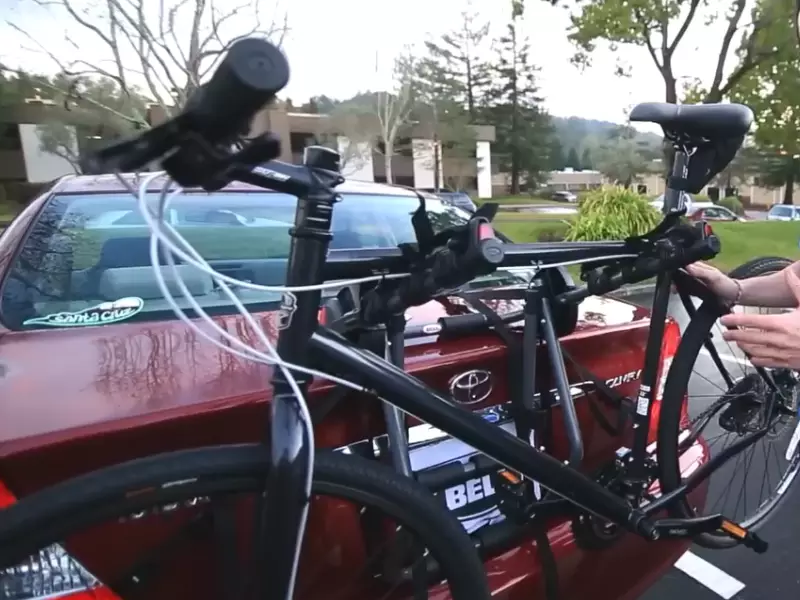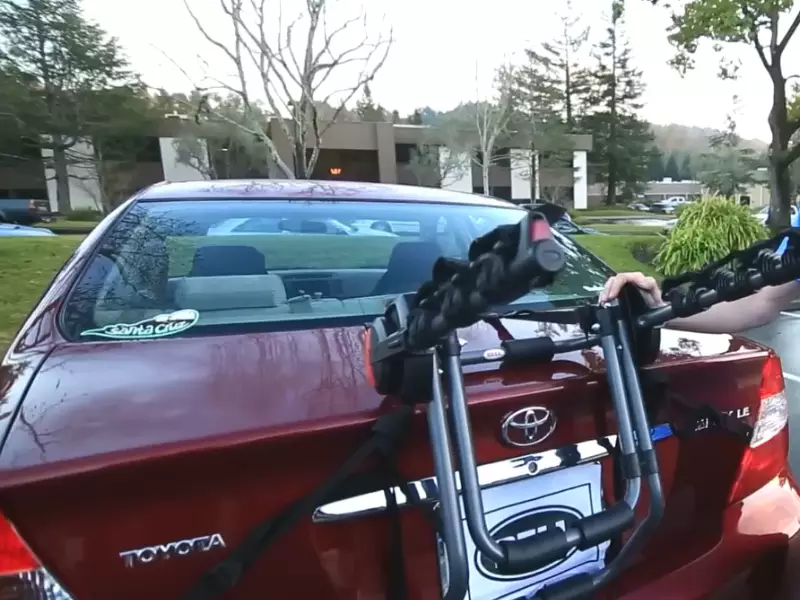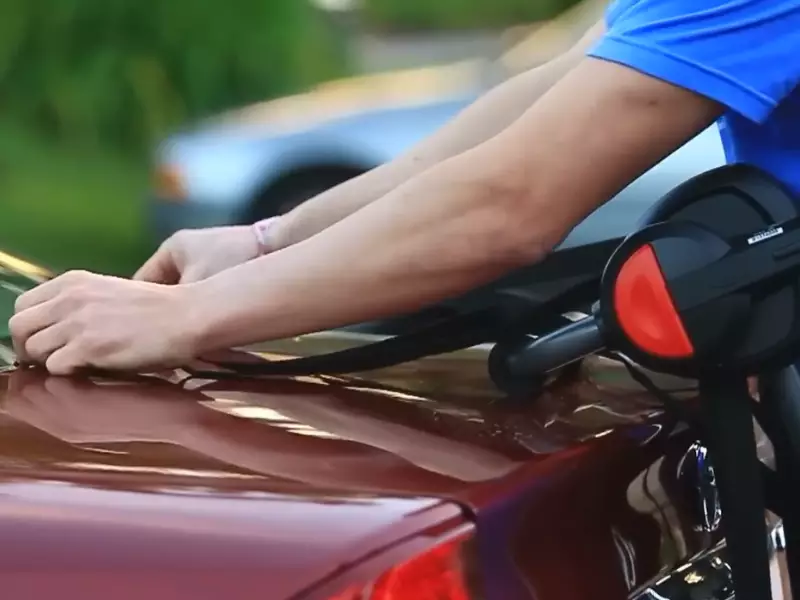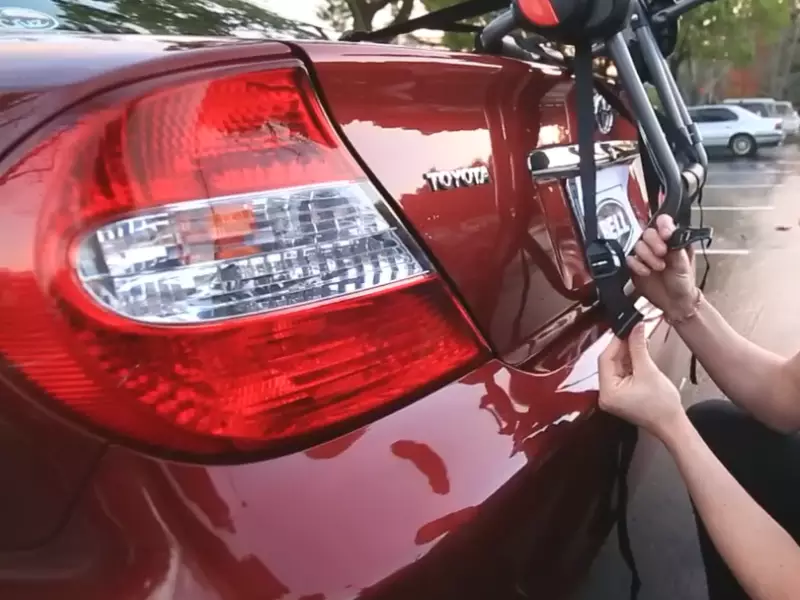To install a bicycle rack on your car, first, determine the type of rack that is compatible with your vehicle. Then, follow the manufacturer’s instructions, ensuring that the rack is securely attached to the car and the bikes are properly mounted.
Preparing For Installation
Before you can start installing a bicycle rack on your car, it’s important to take some necessary steps to prepare. By following these simple instructions, you’ll ensure a smooth and successful installation process.

Choose the right type of bicycle rack for your car
The first step in preparing for installation is to choose the right type of bicycle rack for your specific car model. There are several types of racks available, including roof racks, trunk racks, and hitch-mounted racks. Each type has its own advantages and considerations, so it’s important to select the one that best suits your needs and vehicle.
Gather the necessary tools and equipment
Once you’ve selected the appropriate bicycle rack for your car, it’s time to gather the necessary tools and equipment for installation. The specific tools required may vary depending on the rack and your car’s make and model, but some common items you may need include:
- Wrench or socket set
- Tape measure
- Level
- Alcohol wipes or cleaner
- Adhesive promoter
- Mounting hardware (provided with the rack)
Measure the dimensions of your car and the bicycle rack
Before installing the bicycle rack, it’s crucial to accurately measure both your car and the rack itself. This will ensure that the rack fits securely and properly on your vehicle. Use a tape measure or other measuring tool to determine the dimensions of key areas, such as the roof, trunk, or hitch receiver where the rack will be attached. Additionally, measure the width and length of the bicycle rack itself to ensure it aligns with your car’s dimensions.
Clean and prepare the car surface where the rack will be installed
Prior to installation, it’s essential to clean and prepare the surface of your car where the rack will be installed. This ensures a strong and secure attachment. Begin by cleaning the surface with alcohol wipes or a suitable cleaner to remove any dirt, dust, or debris. Next, use an adhesive promoter to enhance the bond between the car and the rack.
Follow these steps to properly prepare your car for the bicycle rack installation. This will help ensure a successful and secure attachment, allowing you to enjoy worry-free transportation of your bicycles on your car.

Installing The Bicycle Rack
Position the rack on the car roof or trunk
When it comes to installing a bicycle rack on your car, the first step is to determine the ideal position for the rack. Depending on your car model and personal preference, you can choose to mount the rack on the roof or trunk. This decision will have an impact on the ease of loading and unloading your bicycles, as well as the overall aerodynamics of your vehicle.
Attach the rack securely using straps, hooks, or bolts
Once you have determined the placement of the bicycle rack, it’s essential to attach it securely to your car. The exact method of attachment will depend on the specific rack model you are using. Most racks can be attached using straps, hooks, or bolts that are designed to ensure a tight and stable fit.
Adjust the rack to ensure stability and balance
After attaching the rack, it’s crucial to make any necessary adjustments to ensure stability and balance. This will help prevent any unnecessary movement or shifting of the bicycles during transport. Take the time to check and tighten all straps, hooks, or bolts, ensuring that the rack is firmly secured to your car.
Check the compatibility of the rack with your car model
Before installing a bicycle rack, it’s essential to check its compatibility with your car model. This will ensure that the rack fits properly and can be safely attached to your vehicle. Refer to the manufacturer’s instructions or consult their website to find information on compatibility for your specific make and model.
Securing The Bicycles On The Rack
Place the bicycles on the rack with proper alignment
When it comes to securing your bicycles on the rack of your car, it is essential to start by placing them properly on the rack. Proper alignment ensures stability and eliminates any risk of damage or accidents during transportation.
Begin by positioning the bicycles parallel to the ground, with their wheels facing the direction of travel. Take care to align the wheels with the designated wheel trays or tire holders on the rack. This prevents any unnecessary wobbling or movement during the journey, keeping your bicycles secure at all times.

Secure the bicycles using straps, clamps, or locking mechanisms
To ensure the utmost safety and prevent any potential incidents on the road, it is crucial to secure your bicycles firmly to the rack. Use straps, clamps, or locking mechanisms provided by the rack manufacturer to hold the bicycles in place.
Start by attaching the straps or clamps to the frame, handlebars, or other secure parts of the bicycles. Tighten them accordingly, making sure they are snug but not overly tight to avoid any damage. For added security, consider using additional locking mechanisms, such as cable or hitch locks, to deter potential theft attempts and provide extra peace of mind.
Make sure the bikes are spaced evenly and securely attached
In addition to securing each individual bicycle, it is equally important to pay attention to the spacing between them. Proper spacing ensures that the bikes do not collide or rub against each other, minimizing the risk of scratches or damage.
Take a moment to check that each bicycle is evenly spaced on the rack, ensuring there is enough room between them. Avoid placing the bicycles too close together as this can cause them to shift during transport. Ensure that all bikes are tightly attached and stable, giving them a gentle shake if needed to confirm their secure positioning.
Test the stability of the bikes and the rack before driving
Before hitting the road, it is crucial to test the stability of both the bicycles and the rack. Carefully examine each bicycle to confirm that they are secured tightly and will not move during transportation.
Once you have ensured the bicycles are secure, test the stability of the rack itself by giving it a gentle shake. If there is any significant movement or wobbling, double-check all attachment points and tightening mechanisms to ensure they are fastened properly.
Remember, it is always better to be safe than sorry. Before embarking on your journey, take the time to perform these checks to ensure a safe and worry-free experience on the road.
Tips For Safe And Efficient Transportation
When it comes to transporting your bicycles on a car, installing a bicycle rack is an essential step. Not only does it keep your bikes secure, but it also ensures you can safely transport them from one place to another without any damage. To make your journey safe and efficient, follow these tips:

Follow the weight capacity guidelines of the rack and the car
Before installing a bicycle rack on your car, it is crucial to understand the weight capacity guidelines. Both the rack and your car have specific weight limits that should not be exceeded. Exceeding these limits can not only damage your car but also make your journey unsafe. Always check the user manual or manufacturer guidelines to determine the maximum weight that the rack and your car can handle. This will ensure that your bikes are securely transported without putting any strain on your car’s structure.
Double-check all the straps and fasteners before hitting the road
Securing your bikes to the rack is of utmost importance. Before hitting the road, take the time to double-check all the straps and fasteners. Ensure that they are tight and properly fastened to prevent any accidents or damage to your bikes. Loose straps can cause bikes to sway or even fall off during transportation. Make sure to tighten all straps, including those securing individual bikes and the entire rack to your car. By doing this, you can have peace of mind knowing that your bikes are securely attached and won’t pose any hazards on the road.
Use additional safety measures like bungee cords or cable locks
In addition to using the standard straps and fasteners provided with the rack, using additional safety measures can provide extra security during transportation. Consider using bungee cords or cable locks to further secure your bikes to the rack. These extra measures can prevent any unexpected movement or theft attempts, ensuring that your bikes remain in place and safe throughout the entire journey.
Periodically check the rack and bikes during long journeys
During long journeys, it is essential to periodically check the rack and bikes to ensure their stability and security. Stop at regular intervals to assess the straps, fasteners, and overall condition of your bikes. Tighten any loose connections and make any necessary adjustments to keep your bikes in place. This will help prevent any unwanted surprises during your trip and allow you to make quick corrections before any problems arise.
Frequently Asked Questions For How To Install Bicycle Rack On Car
Can You Put A Bike Rack On Any Car?
Yes, bike racks can be installed on most cars. Check the car’s specifications to ensure compatibility.
How Much Does It Cost To Install A Bike Rack On Car?
The cost of installing a bike rack on your car can vary, ranging from around $50 to $500, depending on the type and quality of the rack you choose.
Are Bike Racks Easy To Install?
Yes, bike racks are easy to install.
How Does Bike Rack Attach To Hitch?
Bike racks attach to hitches by inserting the rack’s shank into the hitch receiver and securing it with a hitch pin and clip. The shank slides into the receiver, and the pin goes through the hole in the receiver and shank, holding it in place.
Conclusion
Installing a bicycle rack on your car is a simple and efficient way to transport your bikes. By following the step-by-step instructions outlined in this post, you can easily secure your bike rack to your vehicle, ensuring a safe and hassle-free journey.
Remember to choose a suitable rack for your car’s make and model, and always double-check the security of the rack before hitting the road. Happy cycling!
